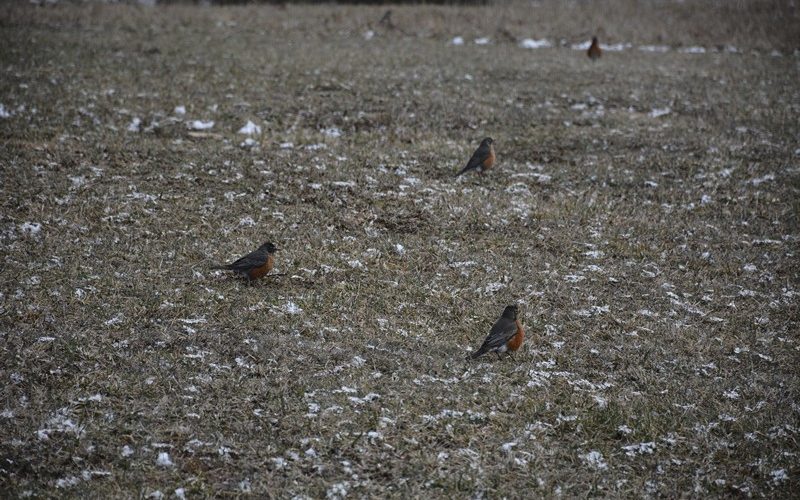Robins are harbingers of spring, but you may have noticed they seem to be all over the place in winter, too. Flocking in winter in Northwest Arkansas is normal and has its advantages. Many eyes can keep better watch for predators, and large flocks can cooperate to find and share food sources.
Not all populations of robins are migratory. Some decide to stay close to their breeding grounds. They can swarm around roads, fill up back yards, and delight people of all ages with their hop-hop-pause movement. The Cornell Lab of Ornithology posted in AllAboutBirds.org that they get a lot of questions from people surprised to see robins in winter.
“Over the past 10 years, robins have been reported in January in every U.S. state, except Hawaii, and in all of the southern provinces of Canada. Usually these flocks appear where there are plentiful fruits on trees and shrubs, such as crabapples, hawthorns, holly, juniper and others.” Later in the spring when robins become territorial rather than cooperative, we see them in our yards and can easily assume they have “returned” from migration. But they may have been here all along!
Whether or not we see them depends upon the weather, food supply and other factors. But don’t worry, even if it gets extremely unpleasant outside, robins can and do survive. “As long as food is available, these birds are able to withstand quite severe cold.” They do this by puffing up into adorable, insulated birdie balls. By fluffing their feathers in this way, they keep their body temperature up even while the outside temperature plummets.
Humans used to shoot and eat the robin; nowadays, that’s difficult to think about. John James Audubon wrote in “The Birds of America” (1827) that robins are “fat and juicy, and afford excellent eating.” Luckily for songbirds, we feed them rather than eating them. Give your robins some natural winter food sources by planting a native landscape that welcomes them in. Examples of fruit-producing shrubs native to our area include Winterberry (Ilex verticillate), Chokeberry (Aronia arbutifolia), or Southern Arrowwood (Viburnum dentatum). There are many more options that are both native and nutritious for winter wildlife.
You can also help by offering dried fruits such as raisins or cranberries in a feeder. Keep water in the birdbath when possible. They do make heated birdbaths that keep the water from freezing, but these require electricity. Regardless of what you can offer, you’ll probably be gifted with visits by some hungry robins year-round, even if they’re just eating worms from the soil in your yard or neighborhood. Enjoy our lovely, singing feathered friends — no need to wait for spring!
Amanda Bancroft is a writer, artist, and naturalist living in an off-grid tiny house on Kessler Mountain. She and her husband Ryan blog about their adventures and offer tips to those wanting to make a difference at www.RipplesBlog.org.










